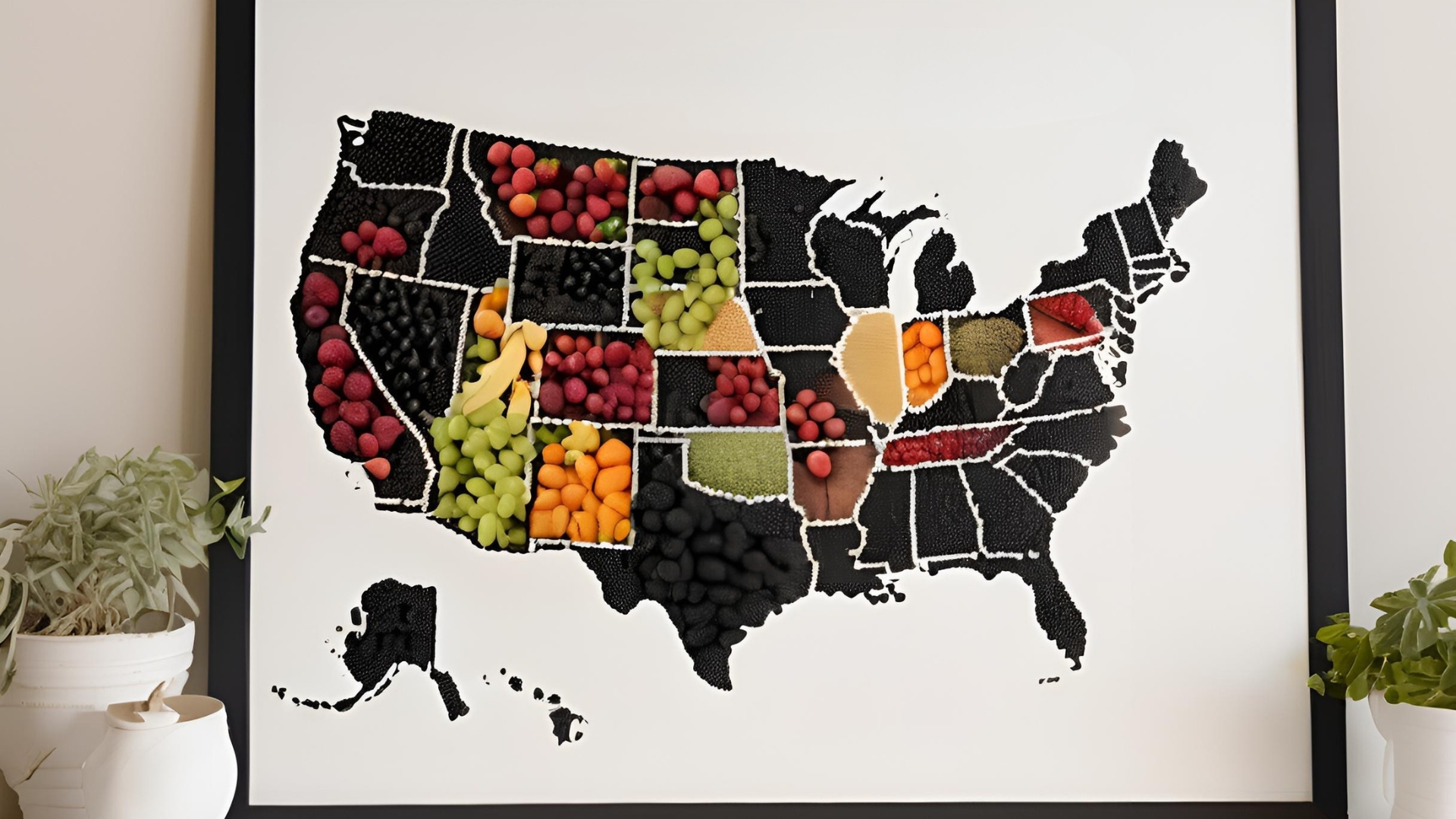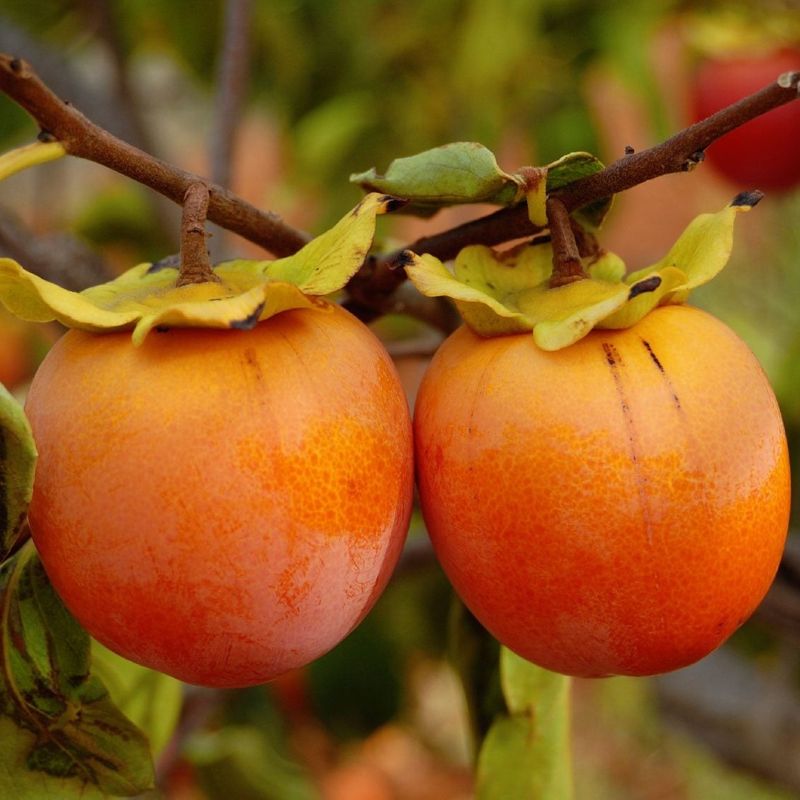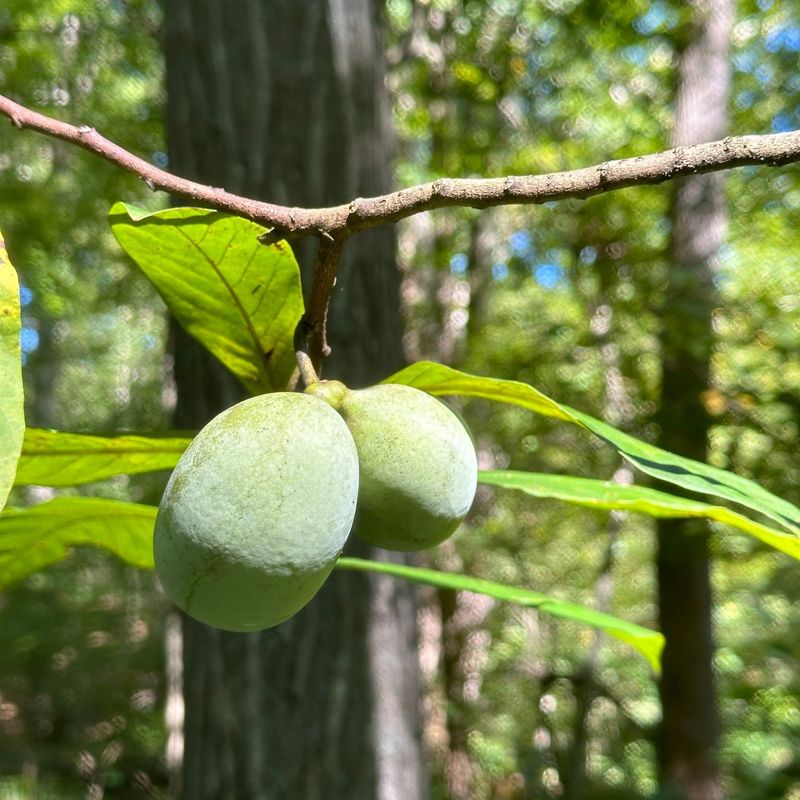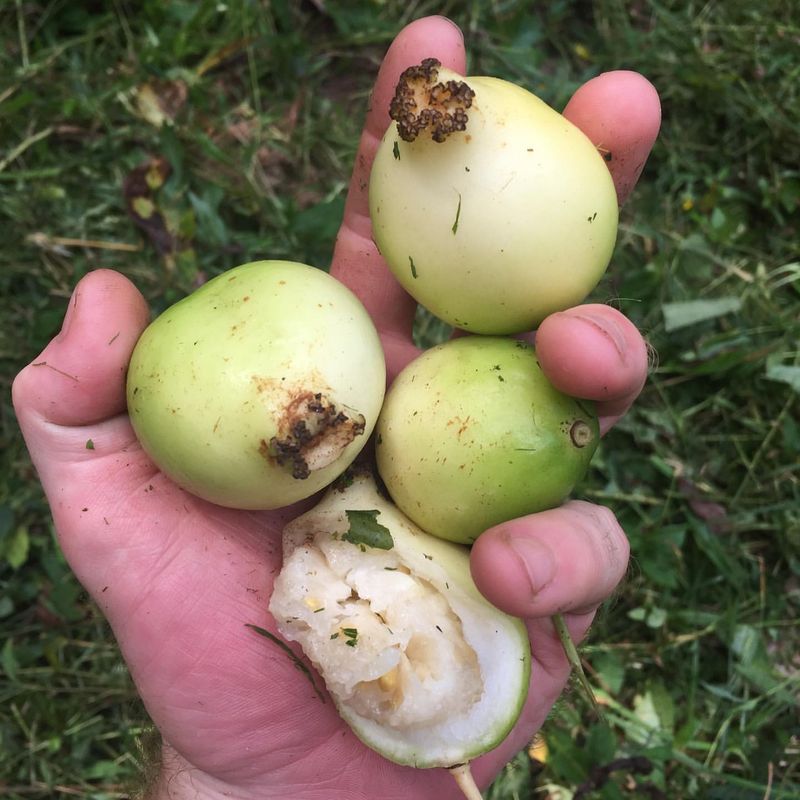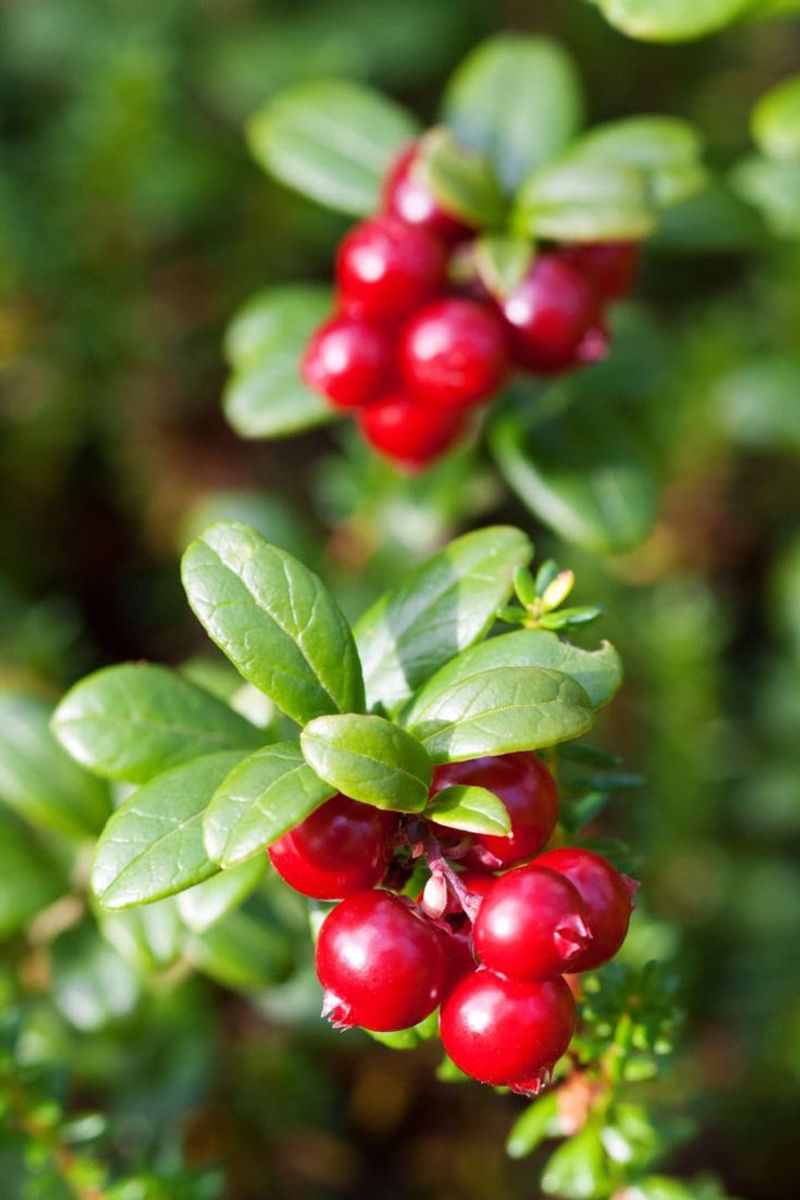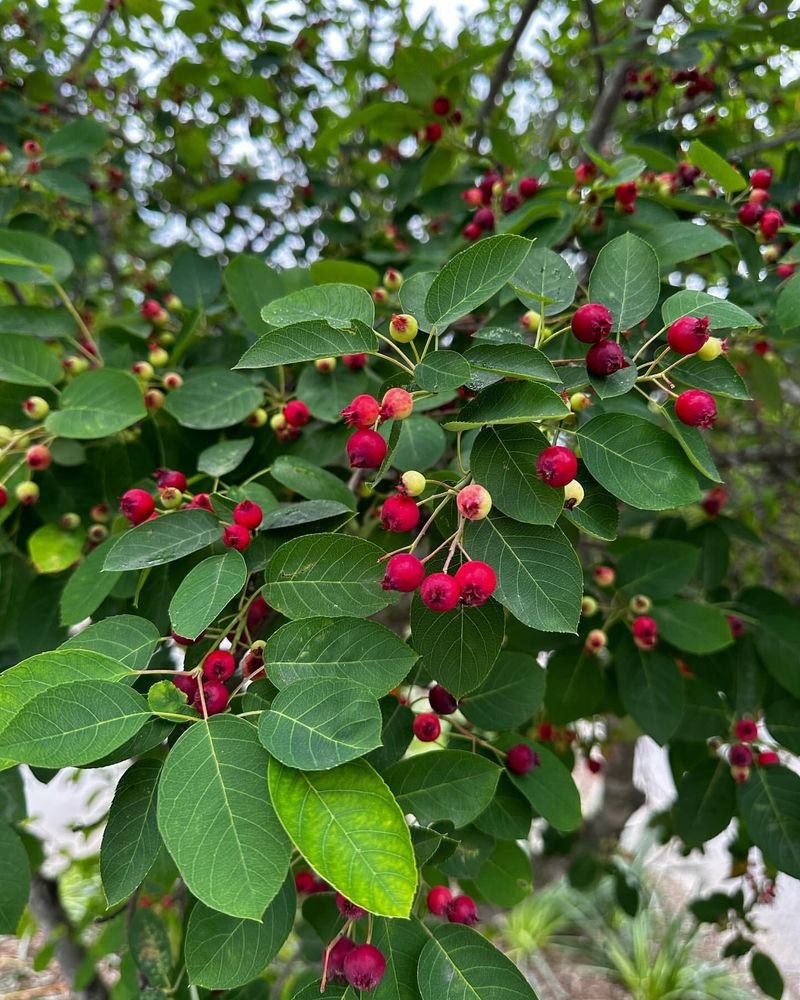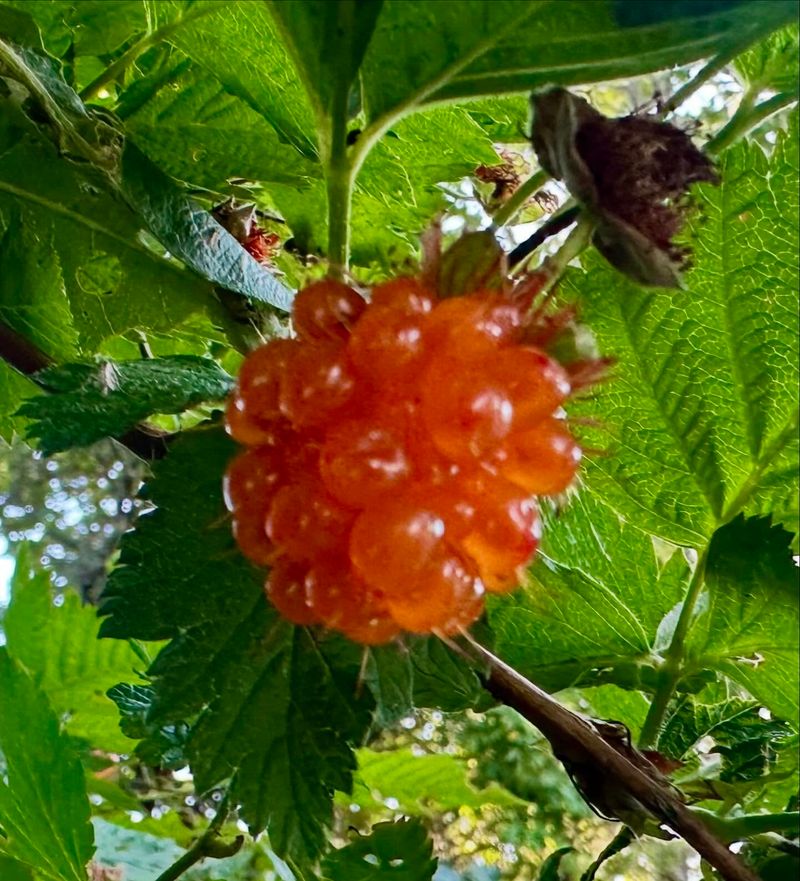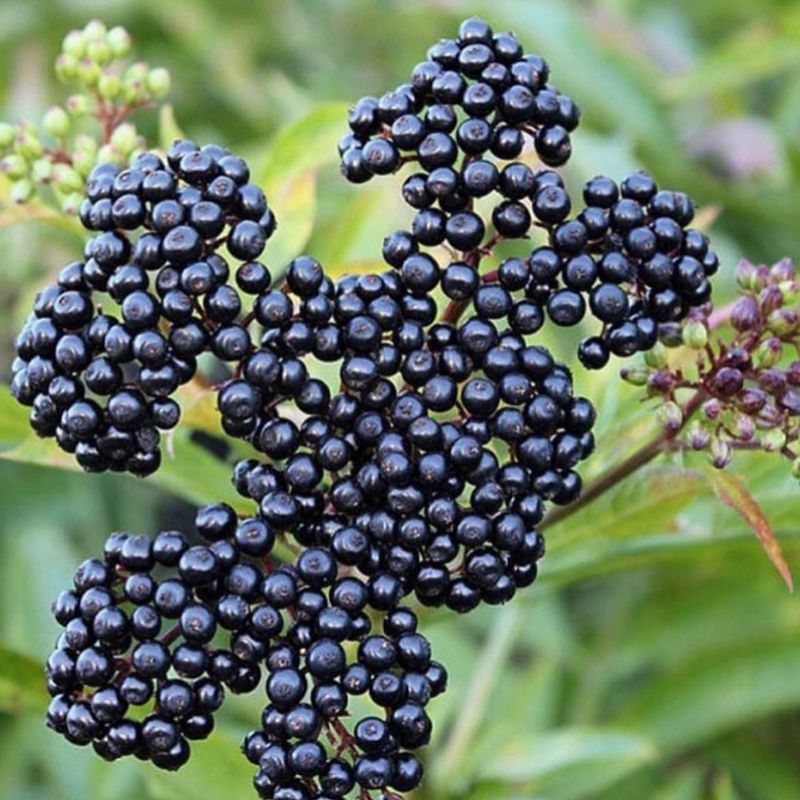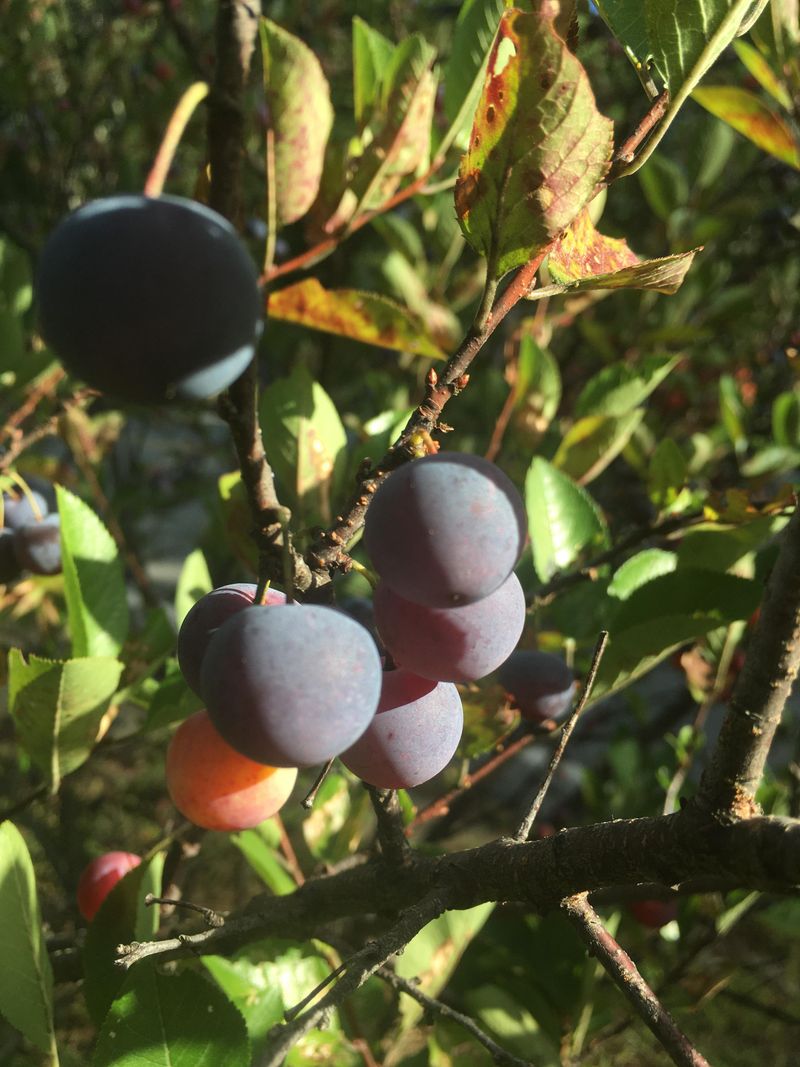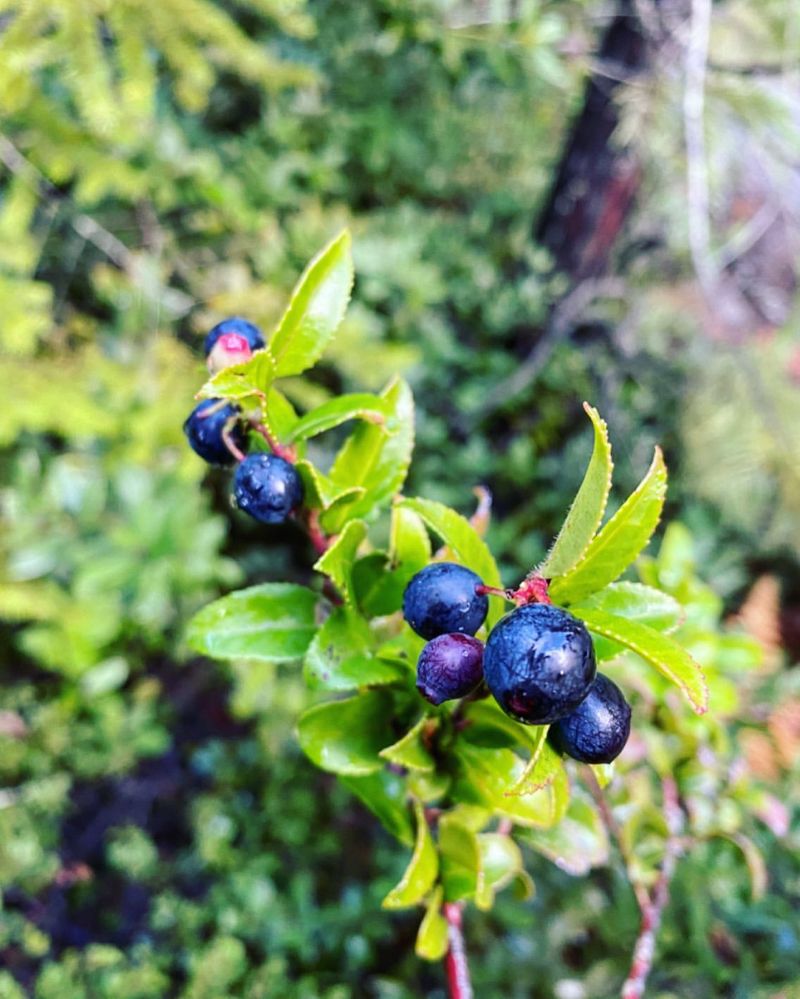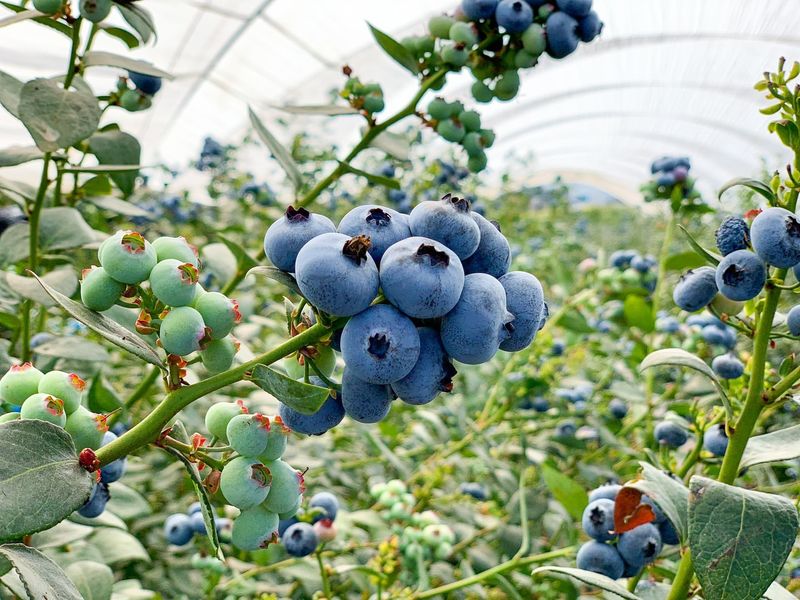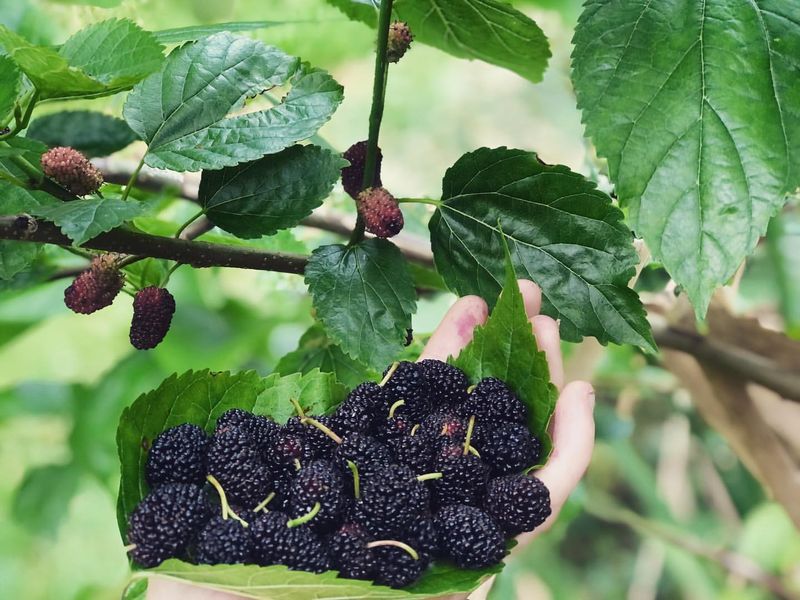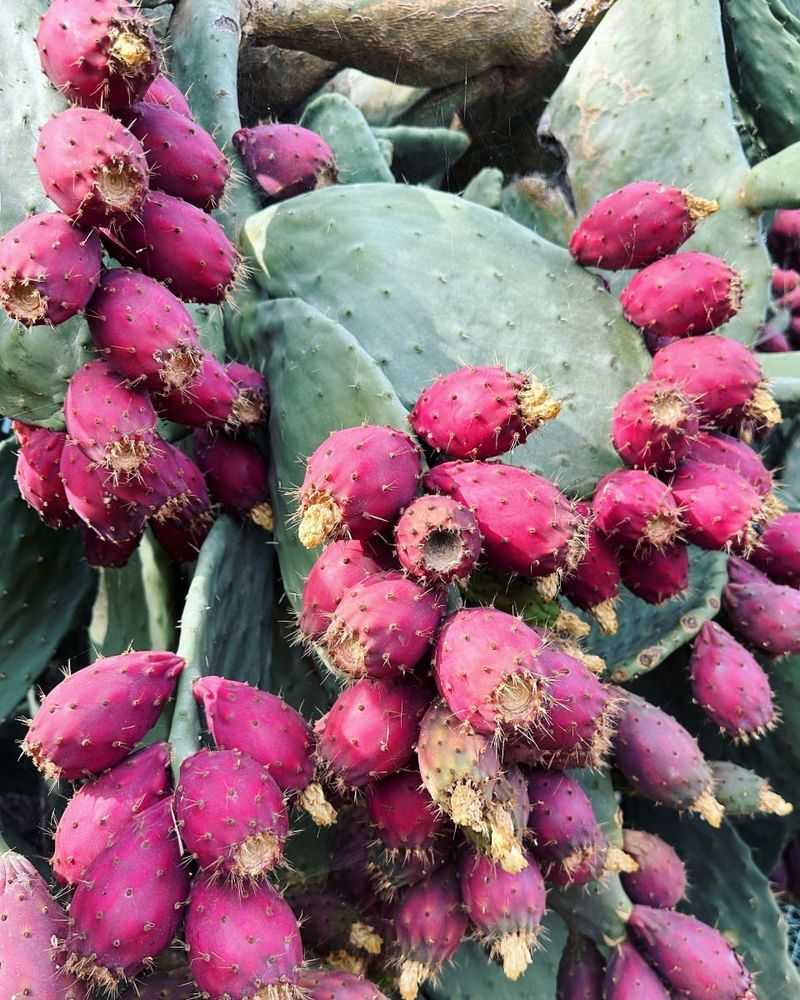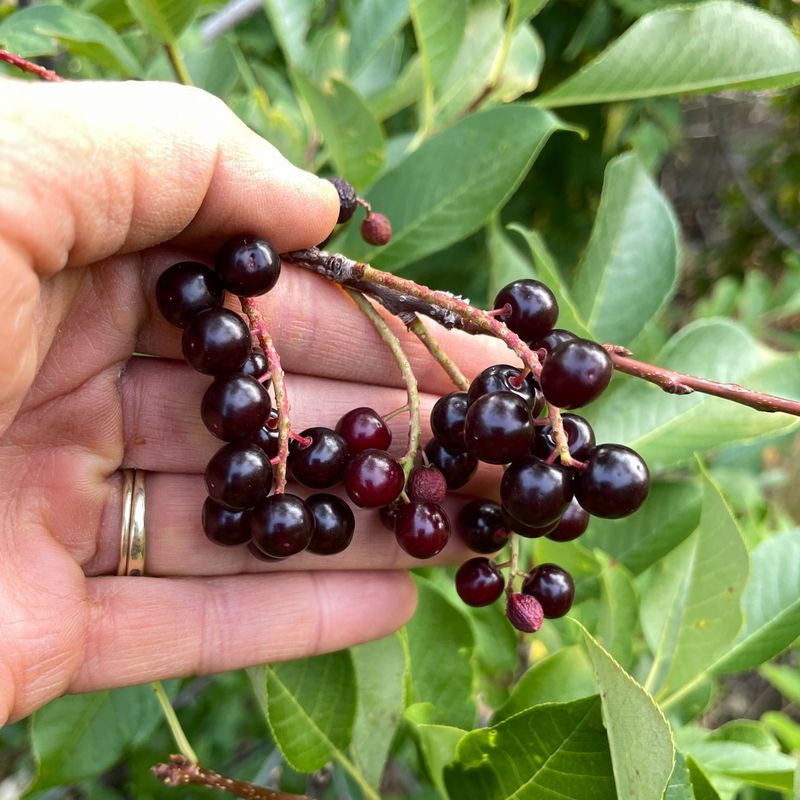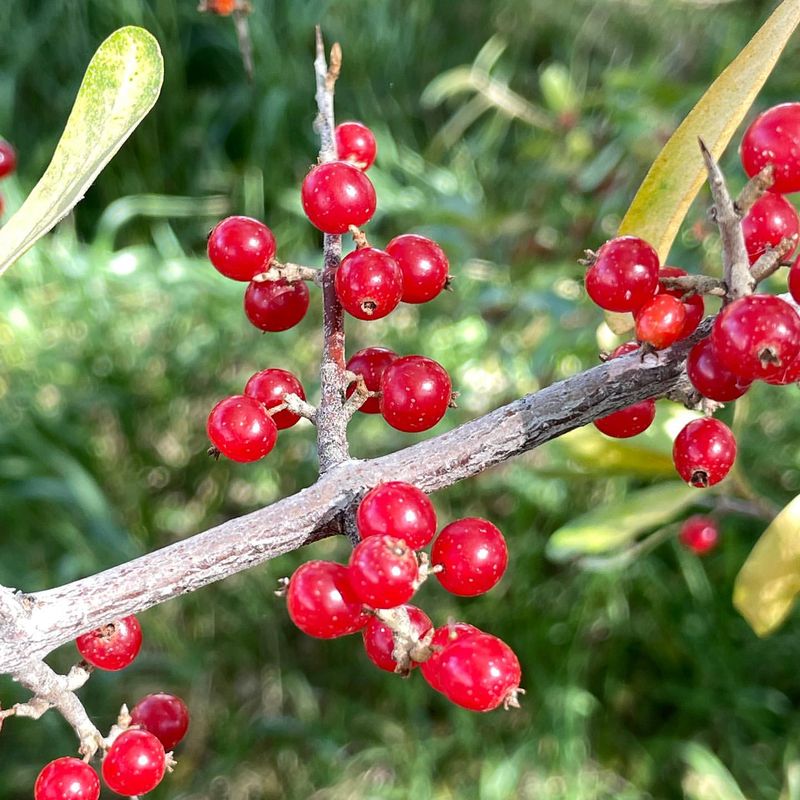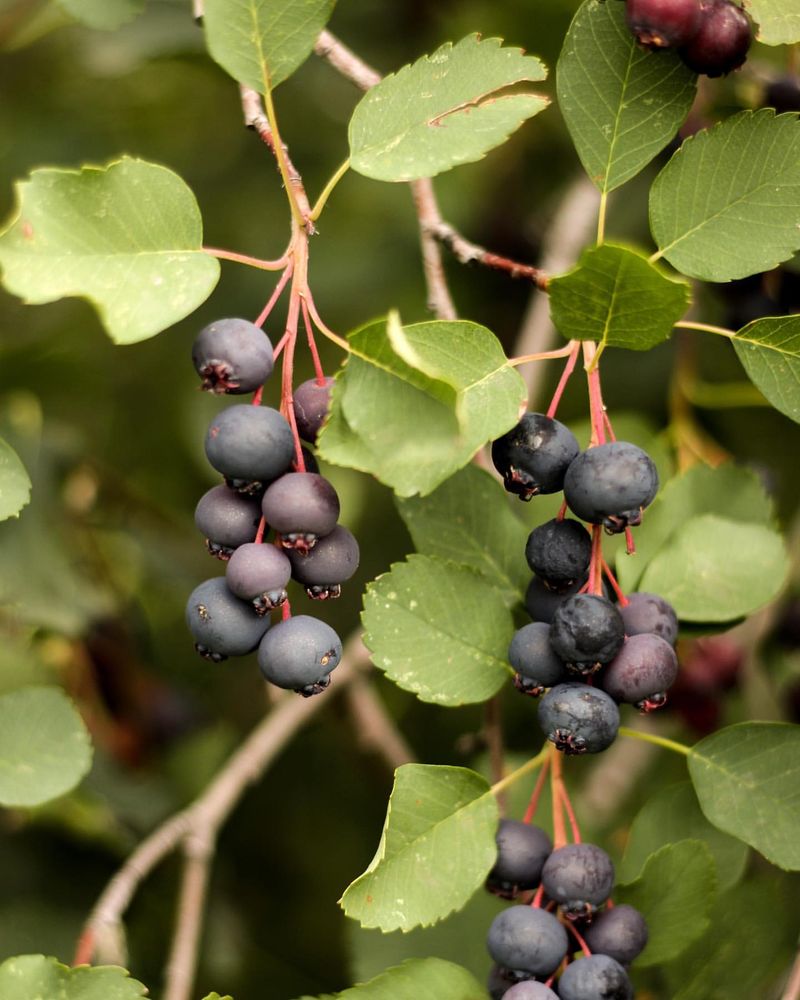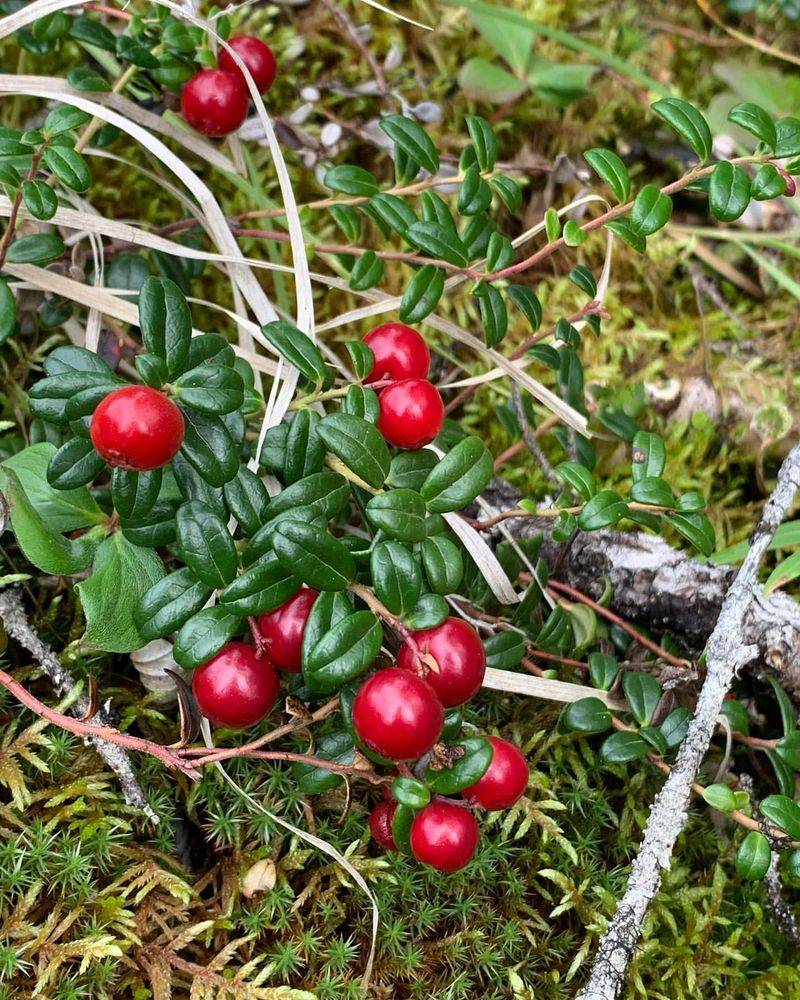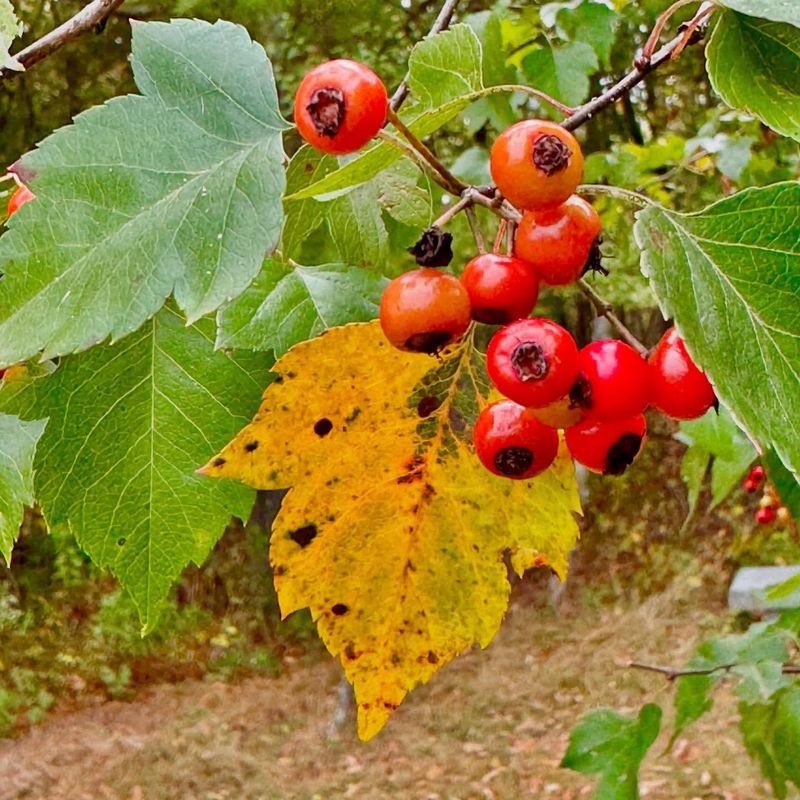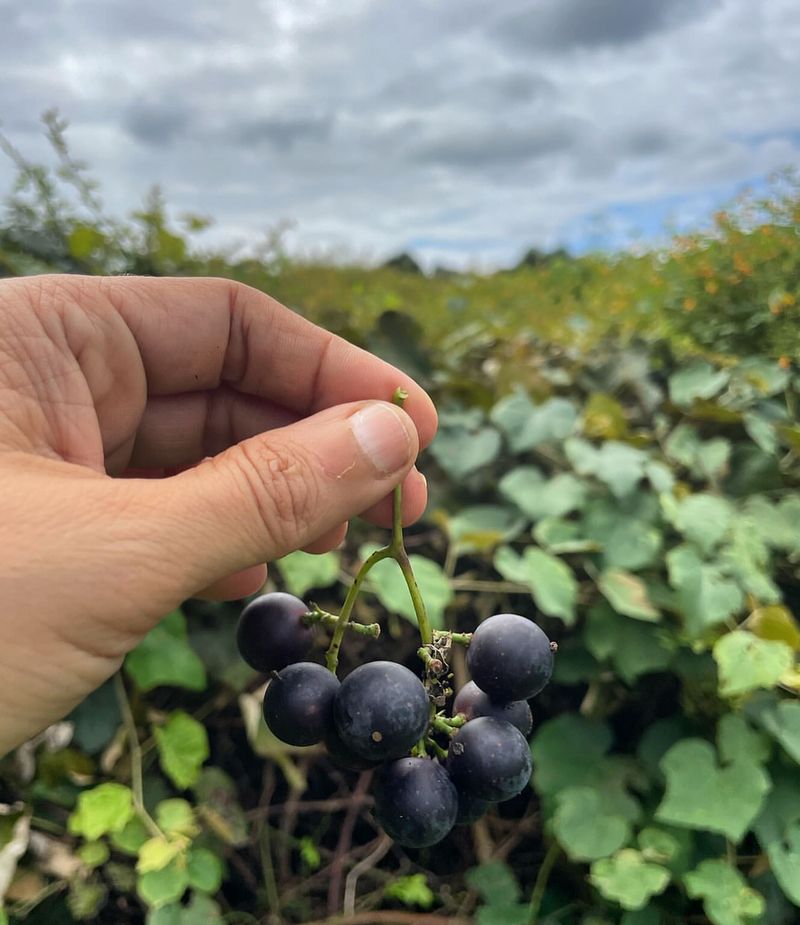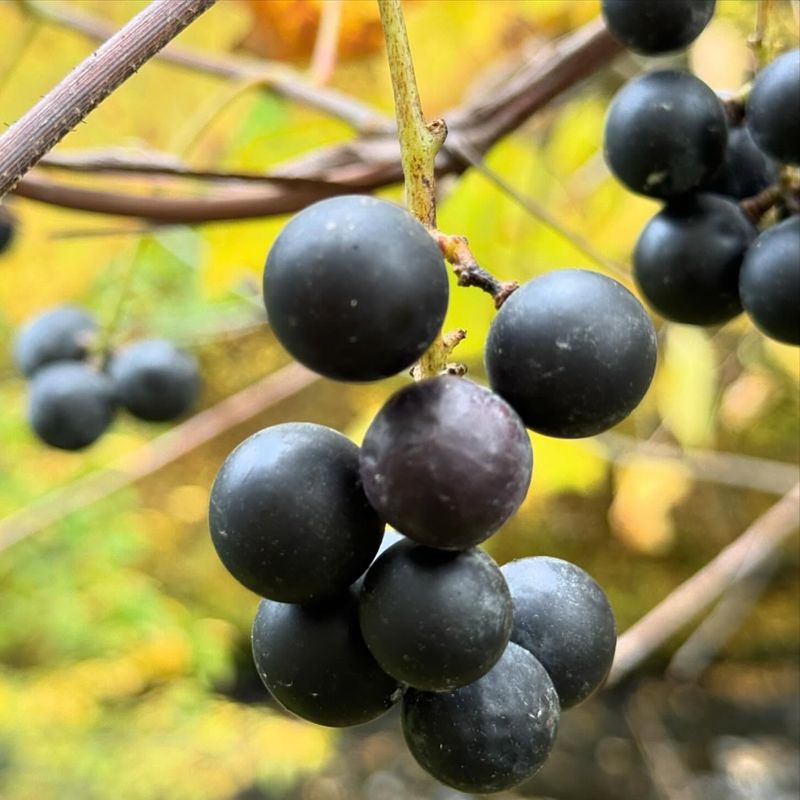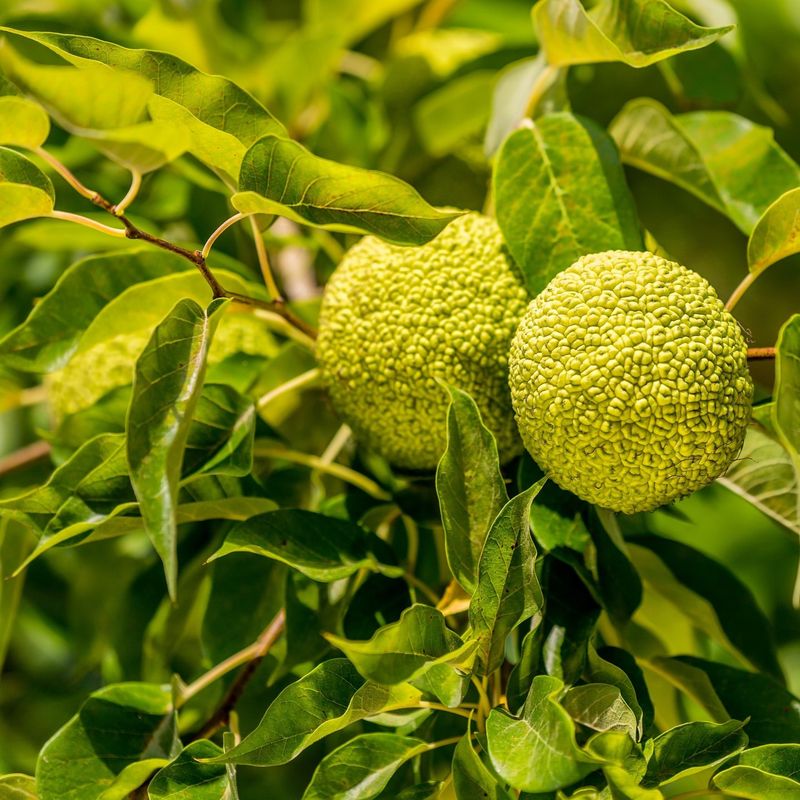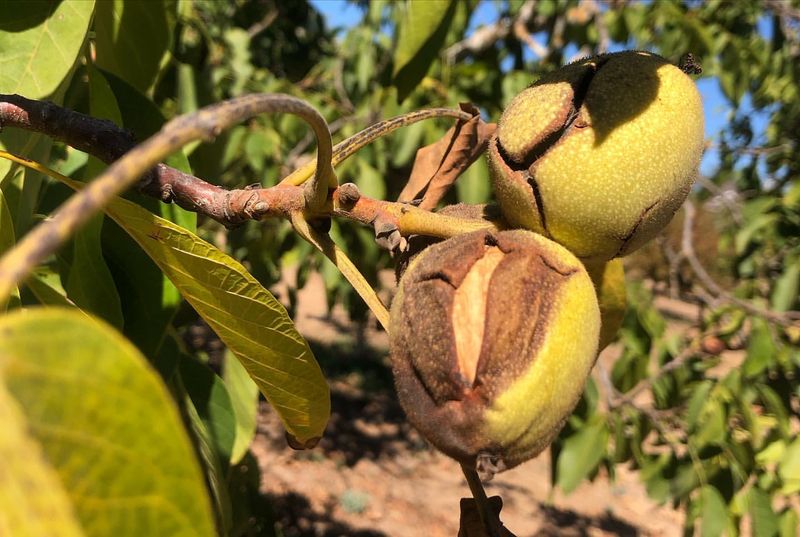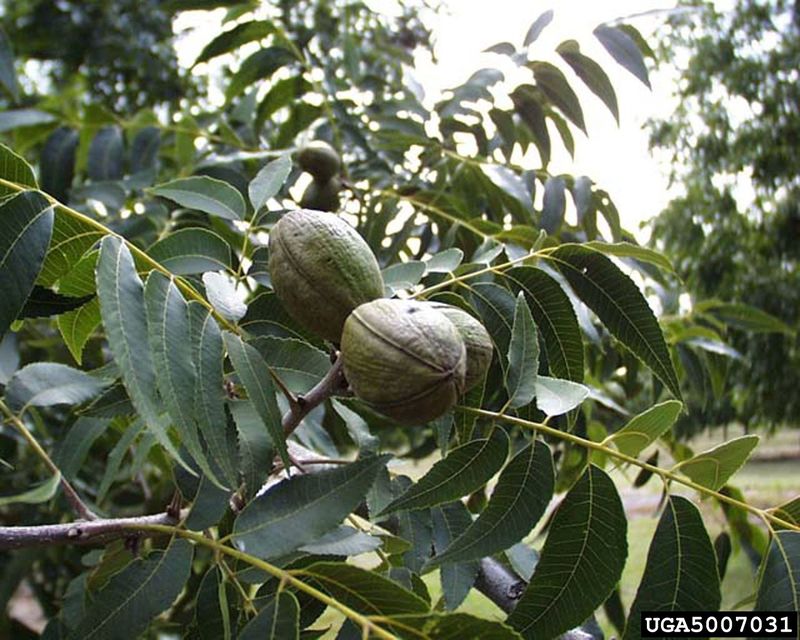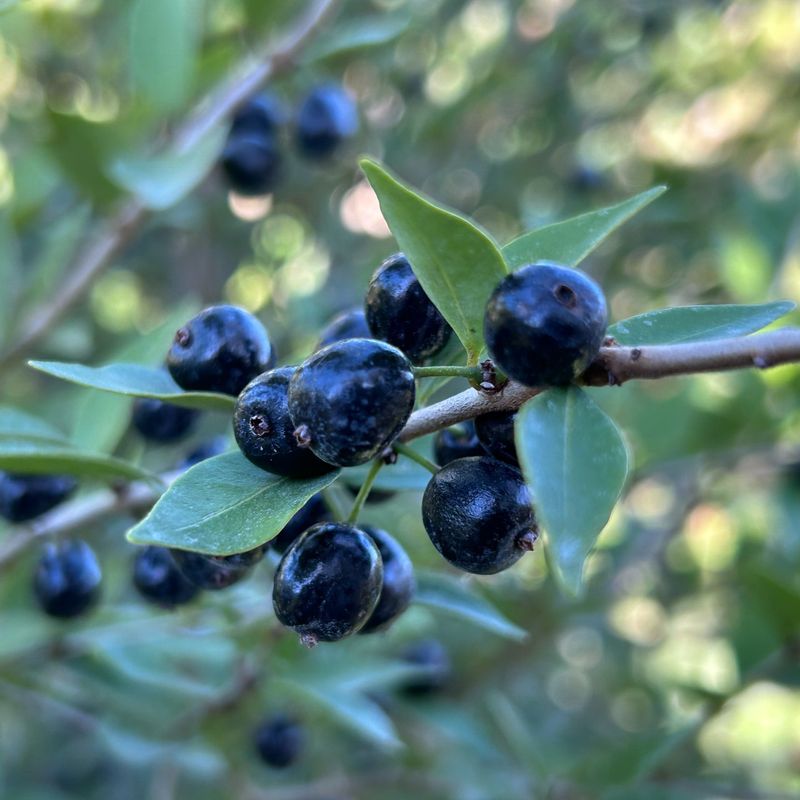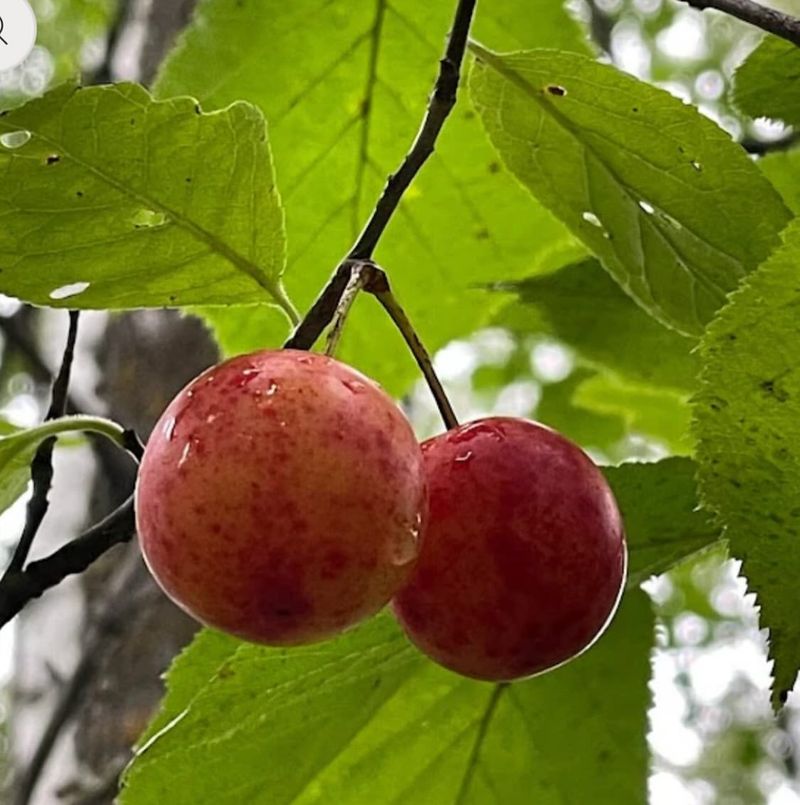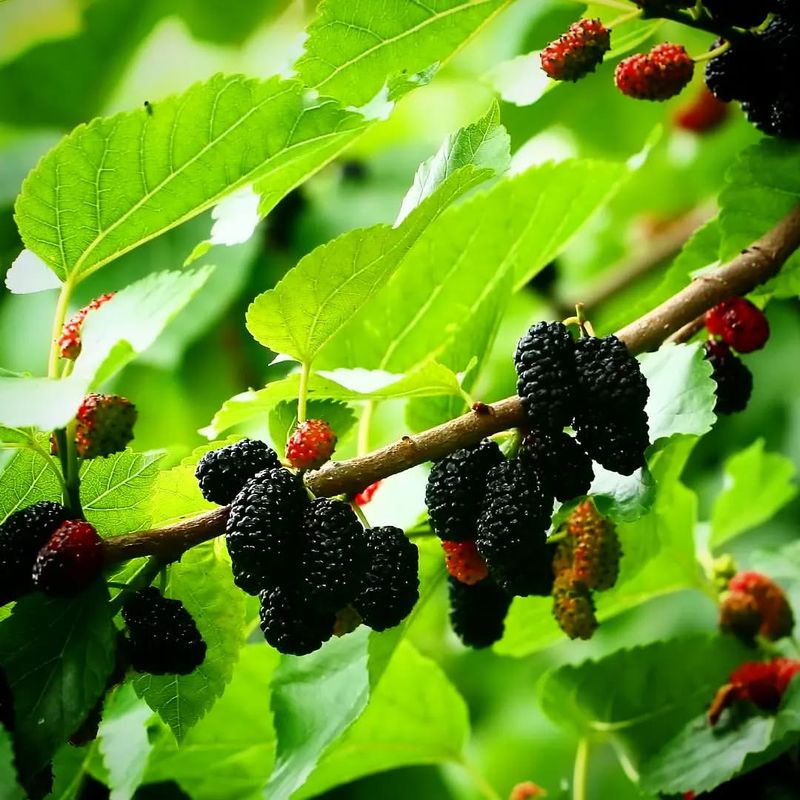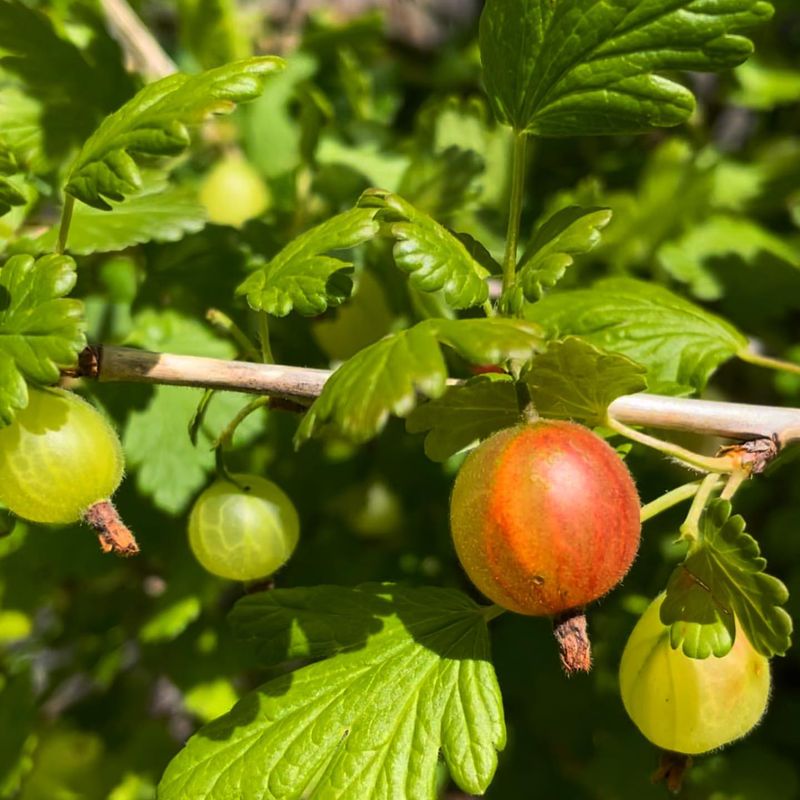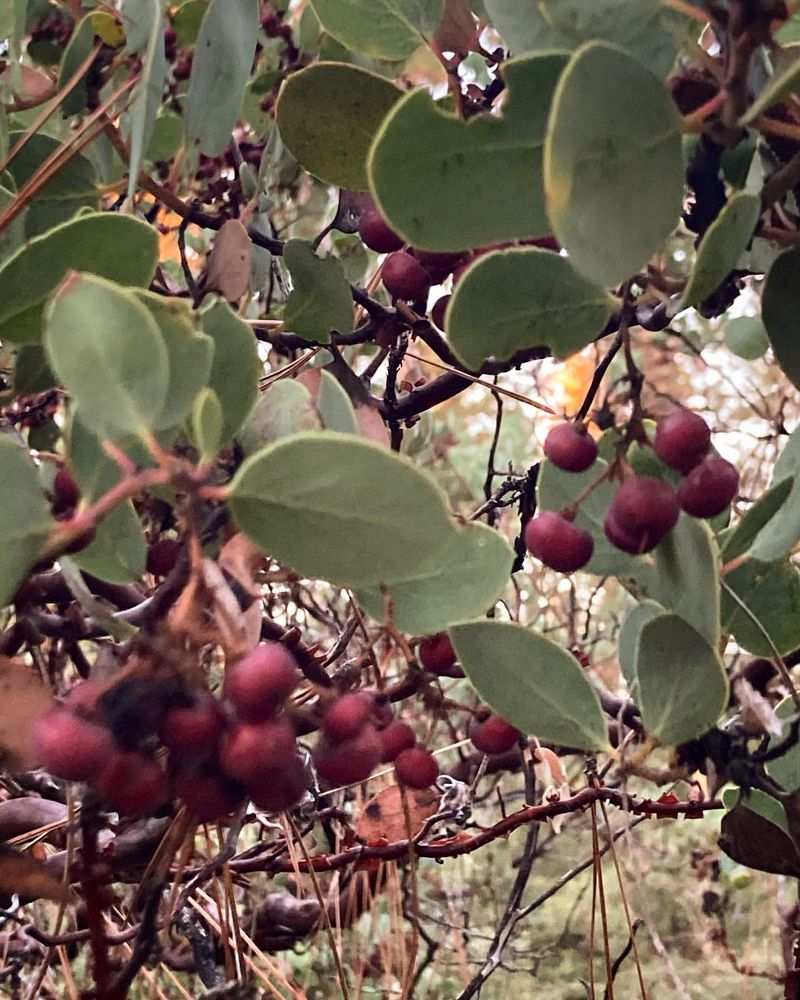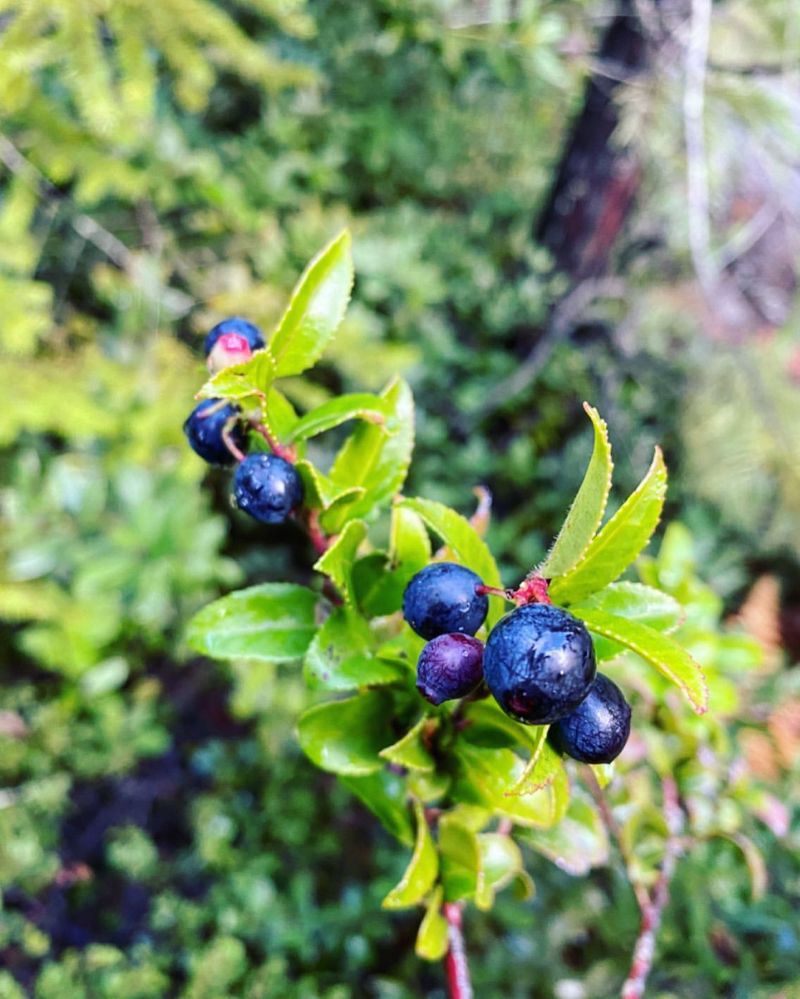America’s luscious landscapes are home to a cornucopia of vibrant and diverse native fruits. From the sun-drenched orchards to the hidden forest groves, these fruits aren’t just surviving—they’re thriving! With bold colors, tantalizing flavors, and remarkable adaptability, they define the essence of local terroir and culture. Join us on a journey through thirty of these native gems, each a taste of the land and a story of resilience.
1. American Persimmon
The American Persimmon, Diospyros virginiana, is a fruit of fall’s bounty, known for its sweet and rich flavor profile. Nestled in the heart of autumn, it dangles like golden orbs among the fiery foliage.
Harvested at the peak of ripeness, these fruits indulge your taste buds with honeyed sweetness, offering a delightful escape into nature’s candy shop.
Thriving in the eastern United States, these persimmons are as hardy as they are delicious, embodying resilience against the changing seasons. Perfect for pies, puddings, or simply relished fresh, they are a testament to nature’s generosity.
2. Pawpaw
The pawpaw (Asimina triloba) is America’s best-kept fruity secret, with a custard-like texture and a tropical flavor reminiscent of bananas and mangoes. This exotic delight grows in the underbrush of eastern woodlands.
Often described as a banana of the forest, the pawpaw captivates with its creamy flesh and enchanting aroma.
Easily adaptable, it thrives near rivers and streams, offering sustenance to both wildlife and adventurous foragers. With its short shelf life, pawpaws are best enjoyed fresh or transformed into delightful ice creams and baked goods.
3. Mayapple
Mayapple, or Podophyllum peltatum, hides its treasure beneath umbrella-like leaves, offering a sweet, tangy fruit once it ripens. Found in the deciduous forests of the eastern U.S., it’s a true woodland marvel.
While the plant is toxic, the ripe yellow fruit is a treat for those who know its secrets.
Mysterious and intriguing, the Mayapple symbolizes nature’s duality—danger paired with delicious surprise. It’s prized in small doses, often made into jellies or consumed fresh, rewarding the cautious with its unique lemony taste.
4. Cranberry
Cranberries (Vaccinium macrocarpon) paint the northern landscapes with their vibrant red hues, thriving in cool, acidic bogs. More than just a Thanksgiving staple, they’re a powerhouse of nutrition and flavor.
Their tartness is a vibrant zing, ready to awaken any dish from slumber.
These hardy berries survive frost and flood alike, a testament to their robust nature. Enjoy them in sauces, juices, or dried for a snack. With antioxidants galore, cranberries are as healing as they are flavorful, making every bite a burst of health and history.
5. Serviceberry
Serviceberries (Amelanchier spp.), also known as juneberries, offer a sweet taste akin to blueberries, with a hint of almond. Flourishing across North America, they herald the arrival of spring.
Their delicate white flowers transform into purplish-red berries, enticing both birds and humans.
A versatile fruit, they’re delicious fresh, baked into pies, or made into jams. The serviceberry’s ability to thrive in diverse climates underscores its resilience and wide appeal. From garden to wild landscapes, this fruit embodies nature’s promise of renewal and bounty.
6. Salmonberry
Salmonberries (Rubus spectabilis) splash the Pacific Northwest with their unique golden-orange hues. These berries stand out like jewels, both visually and flavorfully.
Their sweet-tart taste is reminiscent of raspberries, with a hint of rose.
Found near streams and in moist woodlands, salmonberries are an integral part of the local ecosystem. Their presence is celebrated by birds, bears, and berry pickers alike. Enjoy them fresh, in jams, or as a vibrant addition to salads. These fruits capture the essence of the misty, lush landscapes they call home.
7. Elderberry
Elderberries (Sambucus canadensis) are tiny, dark jewels with immense health benefits and a rich history. Thriving in the sunny glades and forest edges, they are more than mere decoration.
Known for their immune-boosting properties, elderberries transform into flavorful syrups and wines.
Their tartness is balanced with sweetness, creating a delightful experience. Highly revered in folklore, they symbolize protection and rejuvenation. Despite their small size, elderberries have a big presence in both traditional medicine and modern cuisine, proving that good things come in small packages.
8. Beach Plum
Beach Plums (Prunus maritima) bring a sweet and tart taste of the coast. Found along the sandy shores of the Atlantic, they are a beloved seaside fruit.
These small, hardy plums thrive in harsh conditions, proving resilience against salt and wind.
Their vibrant purple skins hide juicy, flavorful flesh perfect for jams and jellies. Beach plums capture the essence of summer breezes and ocean spray, making them a cherished fruit for those who savor the taste of the shore. Their adaptability ensures they continue to flourish where land meets sea.
9. Huckleberry
Huckleberries (Vaccinium spp.) are the wild, untamed cousins of blueberries, thriving in the mountainous regions of the northwest.
With a taste both sweet and tart, they are a favorite among berry enthusiasts.
These berries are celebrated for their deep, robust flavor, reminiscent of high-altitude landscapes.
Found in dense forests and open meadows, they provide nourishment for wildlife and hikers alike. Whether fresh, in pies, or as preserves, huckleberries are a beloved part of the culinary tradition, offering a taste of wilderness and adventure in every bite.
10. Blueberry
Blueberries (Vaccinium corymbosum) are a true American classic, celebrated for their sweet, juicy goodness and antioxidant-rich profile. Known as superfoods, they thrive in both cultivated fields and wild settings.
The burst of flavor from a single berry is like tasting summer sunshine.
Whether harvested from sprawling farms or secret forest patches, blueberries captivate with their versatility. Enjoy them fresh, in pancakes, or as a smoothie. Blueberries not only delight the palate but also boost health, making them a timeless favorite for all ages and lifestyles.
11. Mulberry
Mulberries (Morus spp.) are the sweet rewards of the mulberry tree, cherished across various cultures for their luscious flavor and nutritional benefits. Flourishing in temperate regions, they offer a taste of summer’s bounty.
These berries transform from green to deep red and black as they ripen, each stage offering a unique taste profile.
Versatile and hearty, mulberries can be eaten fresh, dried, or turned into luscious jams. Their resilience and adaptability make them a favorite in gardens and orchards, bringing joy and bounty with every harvest.
12. Prickly Pear
Prickly pear (Opuntia spp.) is the delightful fruit of the desert, showcasing nature’s adaptability and beauty. With vibrant pink hues and a sweet, melon-like taste, it’s a testament to the resilience of cacti.
Surviving scorching sun and arid landscapes, prickly pears offer hydration and flavor in harsh conditions.
Their spiny skins may deter, but the fruit inside rewards with refreshment and nourishment. Enjoyed fresh, juiced, or in traditional dishes, prickly pears connect us to the desert’s unique ecosystem, where life thrives against all odds.
13. Chokecherry
Chokecherries (Prunus virginiana) are small but mighty fruits, with a rich cultural history among Native American tribes. Thriving in diverse landscapes, they are known for their astringent taste, which mellows when cooked.
These berries are a vital source of nutrition and are often transformed into delicious jams, syrups, and wines.
Their tartness symbolizes their tenacity, surviving in climates ranging from sunny plains to cool mountains. Chokecherries serve as a reminder of the land’s bounty, providing nourishment and flavor through changing seasons.
14. Buffaloberry
Buffaloberries (Shepherdia argentea) are the unsung heroes of the prairie, their bright red berries offering a tart, refreshing taste. Flourishing in dry, open landscapes, they are beautifully resilient.
Their silver-green leaves and scarlet berries create a striking visual contrast in the wild.
Although tart when fresh, buffaloberries are perfect for making jellies and sauces. Known for their nutritional benefits, they have been a staple for indigenous peoples. Buffaloberries remind us of nature’s ability to thrive in simplicity, offering sustenance and beauty even in harsh conditions.
15. Saskatoon Berry
Saskatoon berries (Amelanchier alnifolia) are sweet, nutty delights that thrive across the northern plains and forests. Celebrated for their blueberry-like flavor, they are a beloved ingredient in local cuisines.
With their rich purple hue, these berries are a feast for the senses, enjoyed fresh or in baked goods.
Their high antioxidant content makes them as nutritious as they are delicious. Saskatoon berries embody the spirit of the prairies, where their resilience in diverse conditions ensures they remain a cherished fruit for generations.
16. Lingonberry
Lingonberries (Vaccinium vitis-idaea) are the tart treasures of northern forests, thriving in cool, acidic soils. Their bright red color and sharp flavor are a beloved part of Scandinavian and North American cuisines.
These berries are used in sauces, jams, and as a complement to savory dishes.
Known for their health benefits, lingonberries offer a rich source of vitamins and antioxidants. Their presence in the wild is a testament to nature’s ability to flourish in challenging climates, offering both nourishment and a burst of flavor in every bite.
17. Hawthorn Berry
Hawthorn berries (Crataegus spp.), known for their medicinal properties, are tiny but potent fruits. Found on shrubs and trees in temperate regions, they are a symbol of resilience and vitality.
Their tart, tangy flavor is often used in herbal teas and remedies.
Revered for heart health benefits, hawthorn berries are a staple in traditional medicine. Their vibrant red color highlights their presence in the wild, serving as a reminder of nature’s healing power. Despite their small size, they pack a nutritional punch, enriching both body and spirit.
18. Wild Grape
Wild grapes (Vitis spp.) are the untamed ancestors of cultivated varieties, thriving in diverse climates across America. Their bold, tangy flavor is a taste of nature’s raw beauty.
Found in woodlands and along riverbanks, these grapes are a favorite for wildlife and foragers.
Their robust skins and juicy interiors make them perfect for wines, jellies, and snacks. Wild grapes remind us of the land’s generosity, offering a taste of the outdoors with every bite. Embrace their wildness and savor the adventure they bring to your table.
19. Fox Grape
Fox grapes (Vitis labrusca) are the wild relatives of Concord grapes, offering a musky, sweet flavor unlike any other. These resilient climbers thrive in diverse conditions, from rocky hillsides to fertile valleys.
Their unique taste makes them ideal for jams, jellies, and wines.
With a history deeply rooted in American tradition, fox grapes are a symbol of the land’s rich agricultural heritage. Their presence enriches ecosystems, providing sustenance for wildlife and humans alike. Enjoy fox grapes fresh or preserved, and celebrate their untamed spirit.
20. Osage Orange
The Osage Orange (Maclura pomifera), despite its misleading name, isn’t related to citrus. It’s a curious fruit, more renowned for its ornamental qualities than edibility.
Resembling a bumpy, green brain, it grows on hardy trees that thrive in tough soils.
Historically used by Native Americans for crafting bows, the wood is as remarkable as the fruit. While not typically consumed, the Osage Orange remains a fascinating symbol of nature’s quirks and resilience. Its presence in the landscape is a testament to adaptability and the diverse tapestry of American flora.
21. Persian Walnut
The Persian walnut (Juglans regia), while not native in the strictest sense, thrives in California’s fertile soils, becoming an integral part of the American fruit landscape.
Known for their rich, buttery flavor, walnuts are a nutritional powerhouse, offering omega-3s and antioxidants.
From salads to desserts, they add a delightful crunch and depth of flavor. Their adaptability to various climates makes them a staple in gardens and orchards alike. Beyond taste, Persian walnuts symbolize growth and prosperity, enriching both culinary traditions and the land they flourish on.
22. Pecan
Pecans (Carya illinoinensis), a true native treasure, are synonymous with Southern hospitality and tradition. With their rich, buttery taste, they are a cornerstone of American culinary culture.
Flourishing in the warm climates of the South, pecan trees are a symbol of resilience and abundance.
From savory dishes to the iconic pecan pie, these nuts are versatile and nutritious. Pecans offer more than flavor; they provide a connection to the land and history. Their presence in orchards and kitchens alike celebrates the enduring spirit and bounty of the American South.
23. Black Cherry
Black cherries (Prunus serotina) are the sweet jewels of the forest, known for their bold flavor and dark, luscious appearance. Thriving in a variety of landscapes, they are as adaptable as they are delicious.
Their tart-sweet taste is perfect for beverages, jams, and desserts.
Revered in traditional medicine for their health benefits, black cherries offer both taste and wellness. Their presence in the wild is a testament to nature’s generosity, providing sustenance and delight. Enjoy black cherries fresh, or let them enhance your favorite recipes, celebrating their rich heritage.
24. Wild Plum
Wild plums (Prunus americana) are nature’s candy, small yet bursting with sweet-tart flavor. Found across prairies and woodlands, these plums are a symbol of abundance and diversity.
Their vibrant colors and juicy flesh are perfect for making jellies, jams, and desserts.
Wild plums thrive in challenging climates, showcasing adaptability and resilience. Whether foraged or cultivated, they offer a taste of the land’s bounty, inviting you to savor their simple joys. Celebrate wild plums for their unique flavor and connection to the diverse American landscape they call home.
25. Mulberry
Mulberries (Morus spp.) are the sweet treasures of summer, cherished for their deep, juicy flavor and versatility. Thriving in various climates, they are a testament to adaptability and bounty.
These berries delight fresh, dried, or turned into luscious preserves, each form offering a unique taste experience.
Their presence in gardens and wild landscapes alike highlights their enduring appeal. Mulberries symbolize nature’s generosity, offering nourishment and sweetness with every harvest. Embrace their rich flavor and enjoy them as a delightful addition to both sweet and savory dishes.
26. Gooseberry
Gooseberries (Ribes uva-crispa) are the tart jewels of the garden, renowned for their unique flavor and culinary versatility. Flourishing in cool climates, they offer a taste of summer’s tangy bounty.
Their translucent skins and juicy interiors are perfect for jams, pies, and sauces.
Gooseberries are celebrated for their high vitamin content and antioxidant benefits, making them as nutritious as they are delicious. Their adaptability to various conditions ensures they remain a beloved fruit for generations. Celebrate gooseberries for their vibrant taste and the joy they bring to gardens and kitchens.
27. Manzanita Berry
Manzanita berries (Arctostaphylos spp.) are the hidden gems of California’s chaparral, offering a sweet and tart flavor. Thriving in arid conditions, they are a symbol of resilience and beauty.
These berries are used in traditional beverages and as a flavorful snack.
Known for their high nutritional content, manzanita berries are a delightful addition to both wild and cultivated landscapes. Their presence in the chaparral highlights nature’s ability to flourish in challenging environments, providing nourishment and a burst of flavor unique to the Californian hillsides they call home.
28. Huckleberry
Huckleberries (Vaccinium spp.) are the wild, untamed cousins of cultivated berries, thriving in the mountainous regions of the west. Their sweet-tart flavor is a favorite among berry lovers.
These berries are celebrated for their robust taste, reminiscent of high-altitude adventures.
Found in forests and meadows, they nourish both wildlife and hikers. Whether fresh, in pies, or as preserves, huckleberries offer a taste of wilderness and the joy of discovery with every bite. Embrace their bold flavor and enjoy the delicious adventure they bring to your table.

